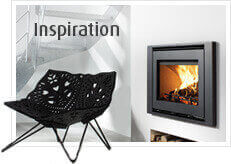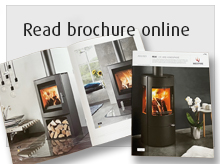Function and use
Most wood burning stoves and fireplaces are easy to use. They are usually simple to light using a few firelighters, and the heat is often as easily regulated as on a radiator. Use only clean, dry wood in your fireplace or stove, and make sure there is a good supply of oxygen when lit. Burn only small amounts of wood at a time – too much wood can lower the combustion temperature too far.
Ash must be removed at regular intervals, though it is a good idea to leave an insulating layer in the bottom of the stove as it will make it easier to light the fire the next time round. Remember that it will probably take you a little while to become familiar with a new fireplace or stove if you are not used to using one.
The financial advantages
You may be able to make significant savings on your energy bill by using wood to heat your home. The precise figures depend on the size of your home and the current price of oil, but a typical family can save a considerable amount on their heating bill by using their fireplace or stove as a supplementary source of energy. The investment can often be recouped over the course of just a few short years.
Protecting the environment
The use of wood burning stoves is beneficial for the environment. Developments in the design of Danish stoves, for instance, have led to the efficient utilization of thermal energy as wood burning is a natural process.
A part of your lifestyle
If you have never had a fireplace or a stove before, you will soon find that it brings the whole family together. Young and old can work together to split logs, bring in firewood and feed the fire, and the entire family can see and feel the results of their joint labours.
Keep children safe
Remember that hot fireplaces and stoves may be dangerous for small children – never leave a small child unattended near a lit stove! You may want to secure your stove using a special guard.








